




Geometry Shapes for Year 2 Kids - Introduction
We can see different shapes in everything around us. Have you ever seen the model of the earth i.e. globe? It is round in shape. Have you ever thought about the shape of an egg? It is oval. Do you know the shape of a pizza? It is circular. But, what is the shape of the slices that we cut out from a pizza? It is triangular. What about a chessboard? Do you know its shape? They are square-shaped. Similarly, there are other different shapes that we can observe in our everyday life.
Read the article below to know what exactly the shapes are.
What are Shapes in Geometry?
Shapes, also known as geometric shapes or figures, are made up of fixed lines and curves. The name of different shapes describes the number of sides that exist in the given shape. For example, a triangle is a shape with three sides whereas a rectangle is a shape with four sides and many more.
In Geometry, shapes are classified as open shapes, closed shapes, two-dimensional shapes, and three-dimensional shapes.
What are Open Shapes?
Open shapes are shapes whose line segments or curves do not meet. Open shapes do not start and end at one point. In other words, they start at one point and end at another point.
Here are some examples of open shapes.
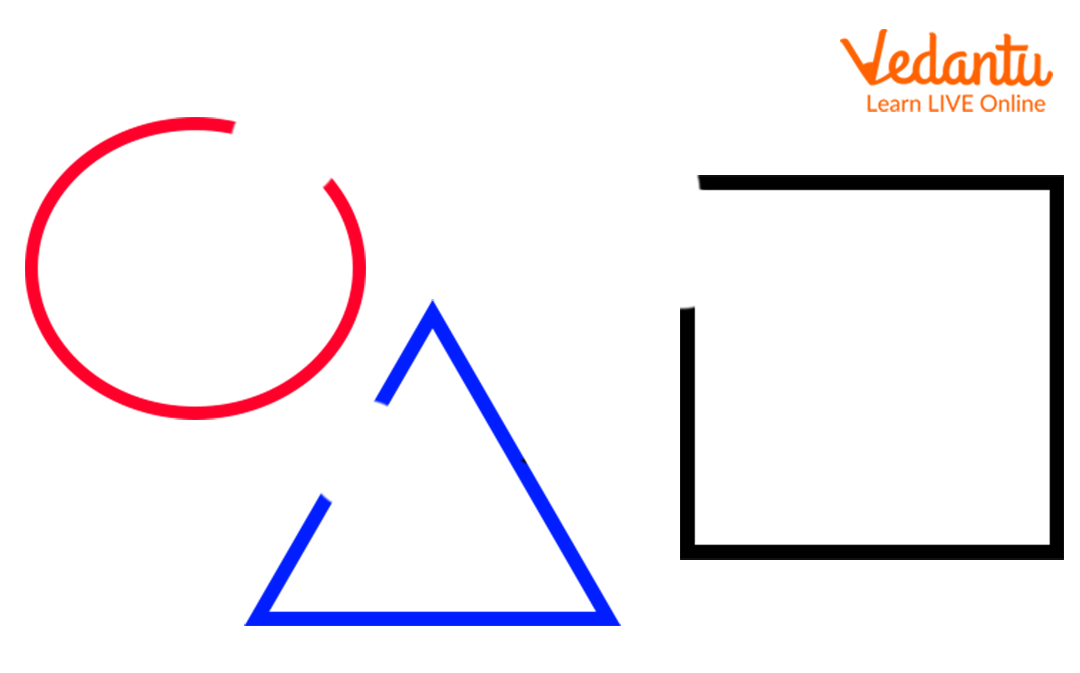
Open shapes
What are Closed Shapes?
The closed shapes are shapes whose line segments or curves are connected or meet. The closed shapes start and end at the same point. Here are some examples of closed shapes.
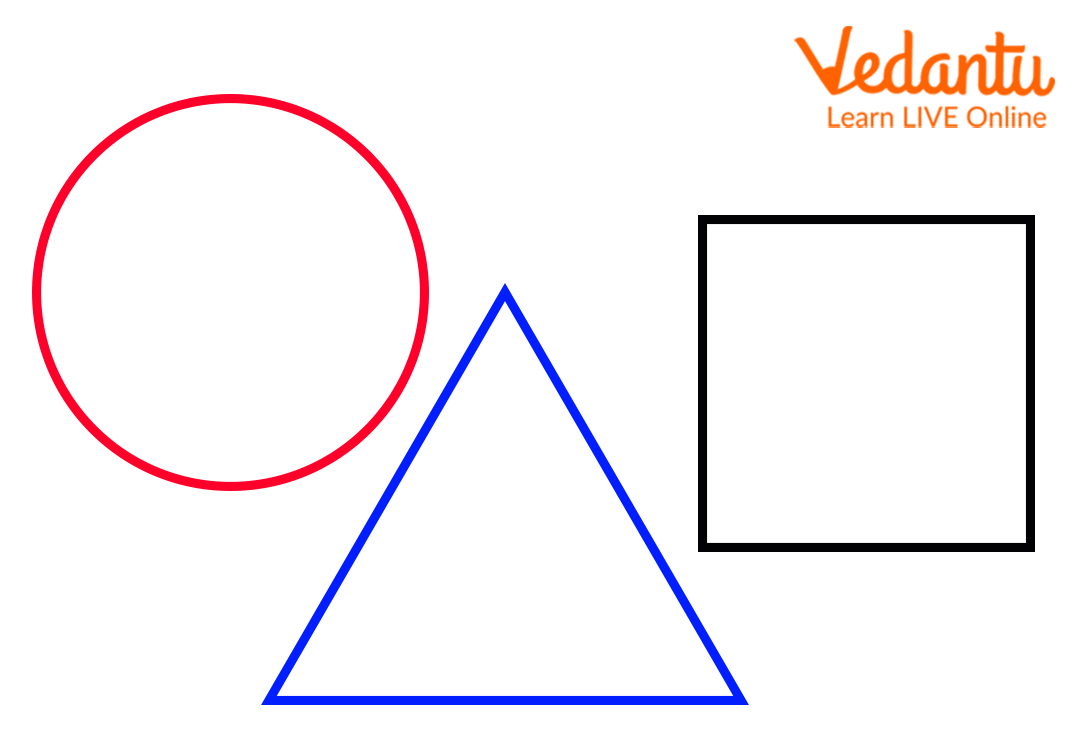
Closed shapes
Real Life Example of Open and Closed Shape
Following are the real-life examples of open and closed shapes.
An Open Shape Real-life Example
A skipping rope is an open shape. You can jump on it.

Two kids skipping ropes
A Closed Shape Real-life Example
A bangle is a closed shape. You can easily wear it on your wrist.
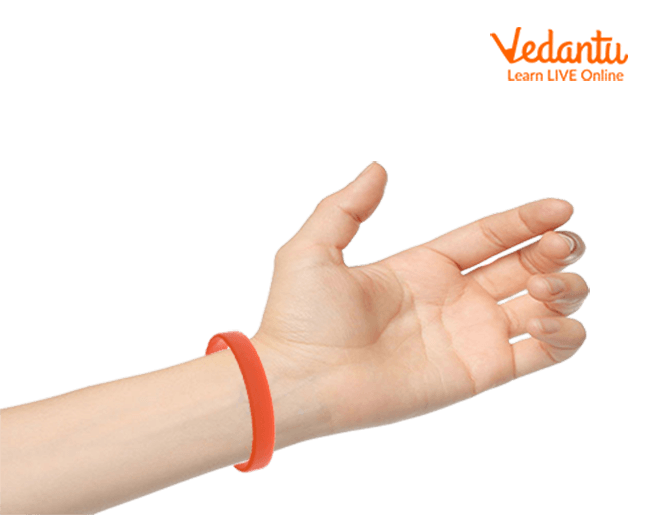
A hand wearing a bangle
What Are 2-D Shapes?
2-D shapes, also known as two-dimensional shapes, are flat and have only two dimensions i.e. length and width. 2-D shapes do not have depth. 2-D shapes include squares, rectangles, circles, etc.
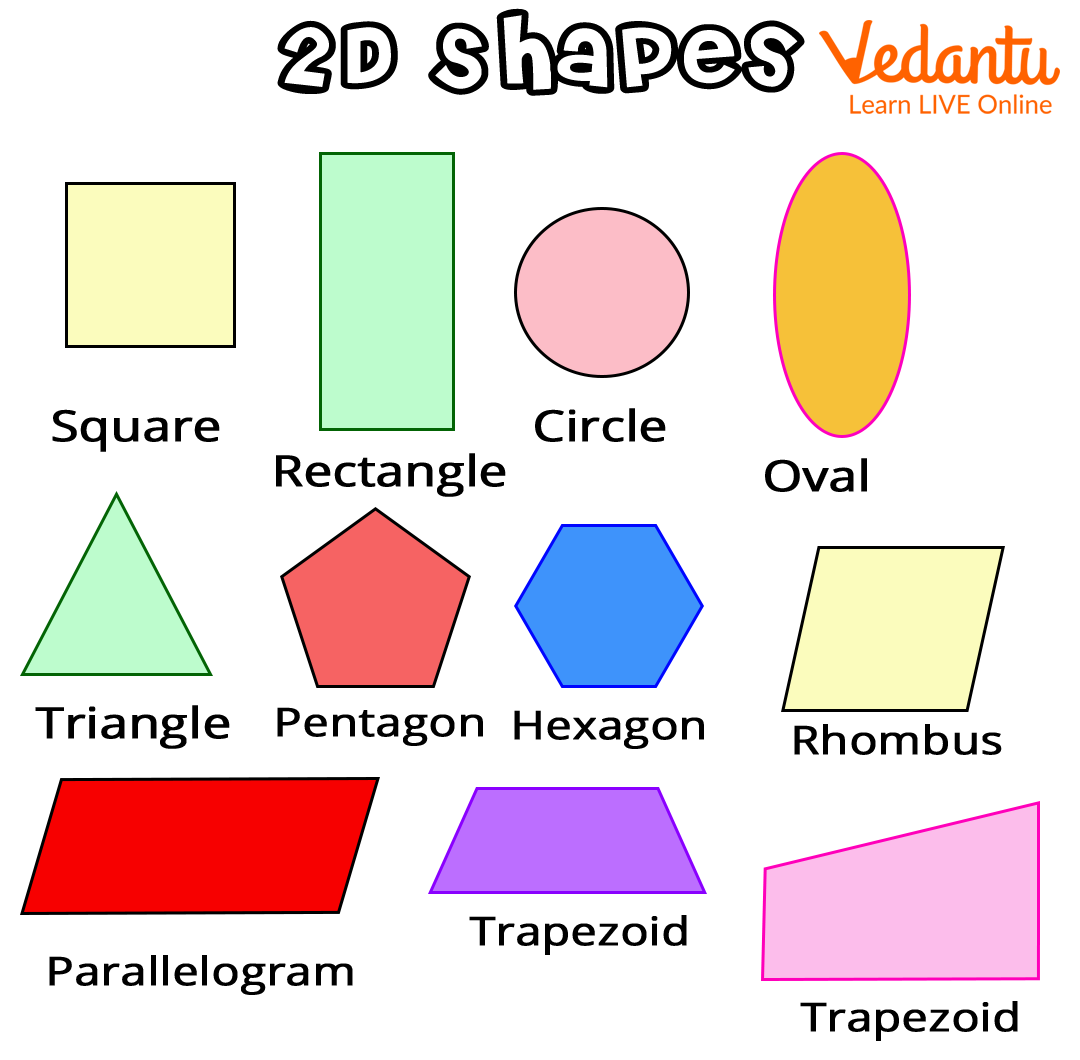
2-D shapes
Names of 2-D Shapes
The different names of 2-D shapes children of Year 2 should know include the following:
What are 3-D Shapes?
3-D shapes, also known as three-dimensional shapes, are solid shapes with three dimensions such as length, width, and depth. Boxes, balls, and packets are of 3-D shapes. Unlike 2- D shapes, 3-D shapes are not flat because these shapes have depth.
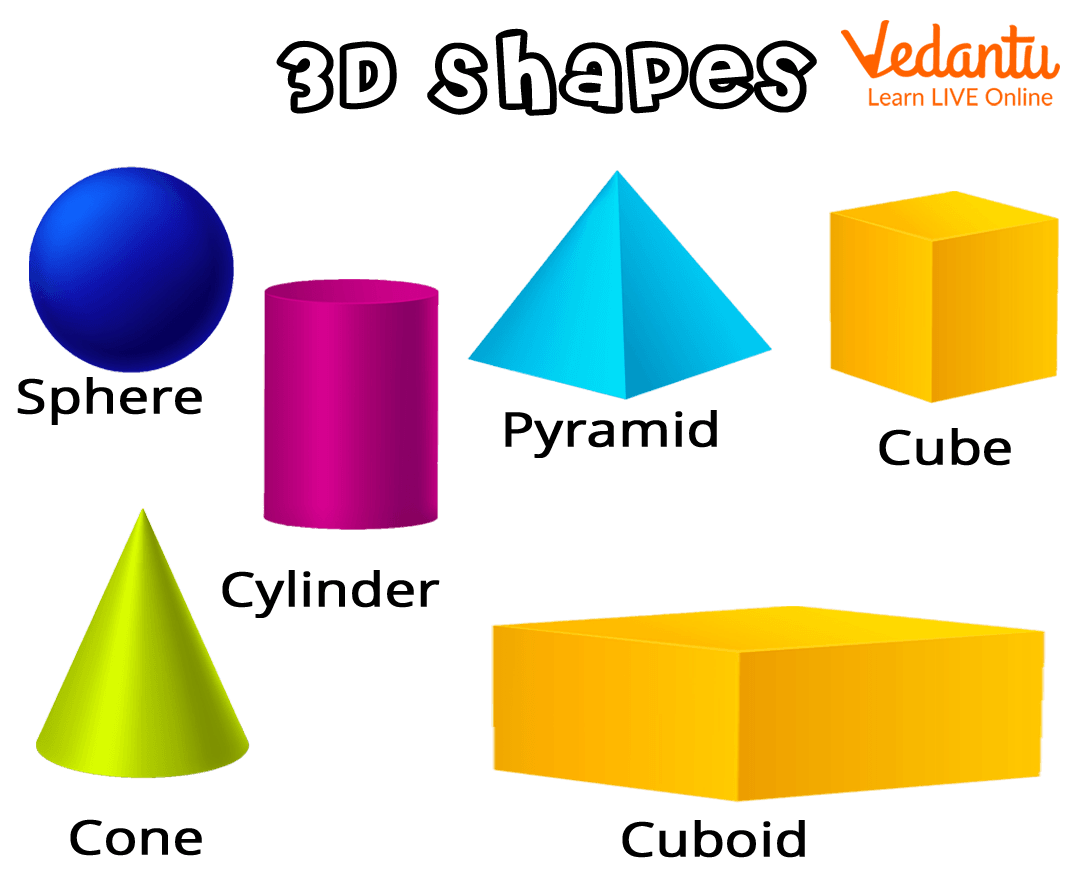
3-D shapes
Names of 3-D Shapes
The different names of 3-D shapes children of Year 2 should know include the following:
Properties of 3-D Shapes
The three important properties of 3-D shapes are faces, edges, and vertices or corners.
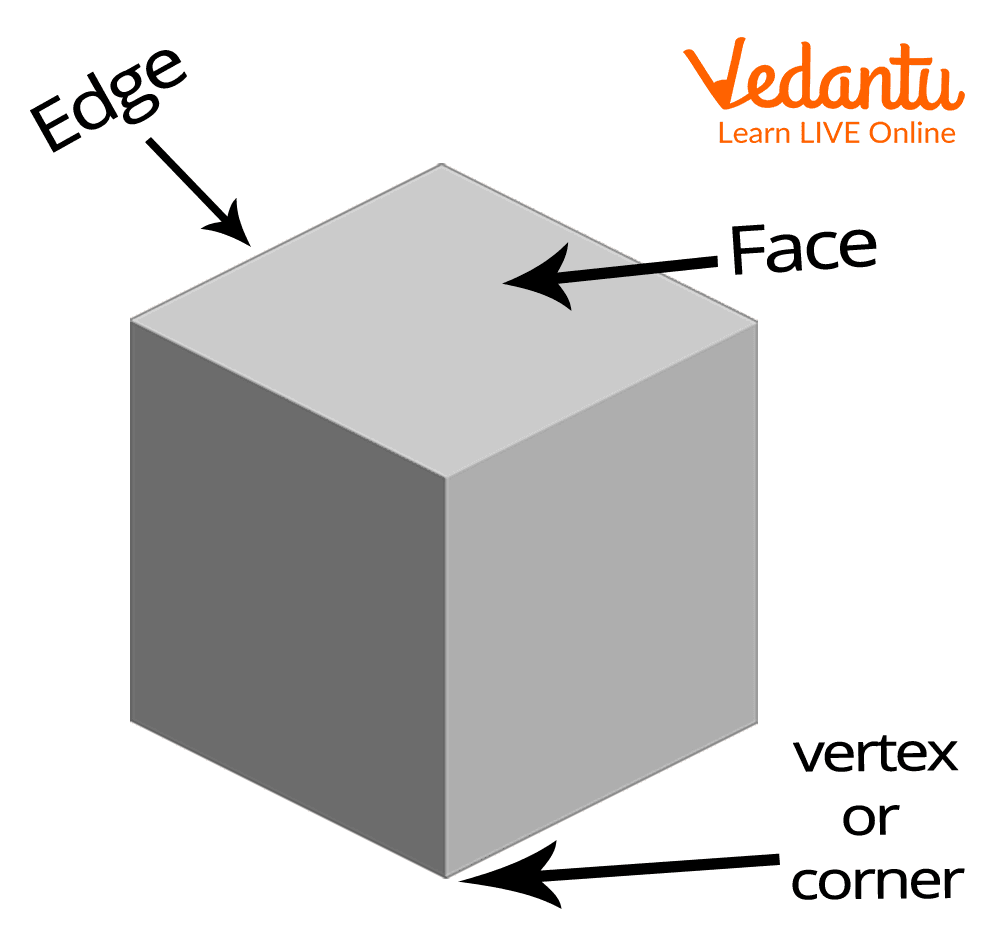
A cube - 3-D shape
Let’s understand the properties of 3-D shapes in brief.
Face: A face is defined as the flat surface of 3-D shapes. For example, the geometric shape cube has 6 faces.
Edge: Edges are lines where two faces of 3-D shape meet. For example, the geometric shape cube has 12 edges.
Vertex Or Corners: A vertex is a corner where edges of 3-D shapes meet. For example, the geometric shape cube has 8 vertices. Remember, the plural form of vertex is vertices.
Conclusion
In short, geometric shapes are enclosed figures made by joining two or more points, lines, and curves. For example, a geometric figure formed by a three-line segment is known as a triangle. Similarly, a geometric shape, circle is formed using a curve. Remember, shapes are classified as 2-D shapes and 3-D shapes based on the number of dimensions they have. 2-D shapes have two dimensions, whereas 3-D shapes have three dimensions.
FAQs on Geometry Shapes for Year 2 Kids: Learn Different Shapes in Geometry for Kids in Year 2
1. Why are 2-D shapes important?
Learning lessons and performing different activities based on the 2-D shapes assist students to enhance their problem-solving skills. Placing shapes in different toys and puzzles in the correct place allows students to identify the characteristics of a shape, and can easily match it with the shape placed on the toy or in the puzzle.
2. Why should we teach 3-D shapes to kids?
We should teach 3-D shapes to kids because it enables them to identify the depth of any object. They will be able to identify and distinguish the different shapes they see.
3. Is Circle defined as a 3-D shape?
No, a circle is not a 3-D shape. 3-D shapes include cubes, cuboids, pyramids, and curves.











